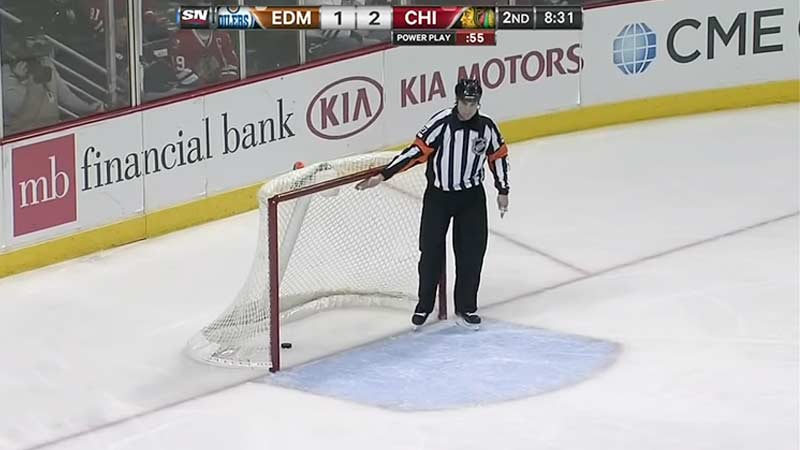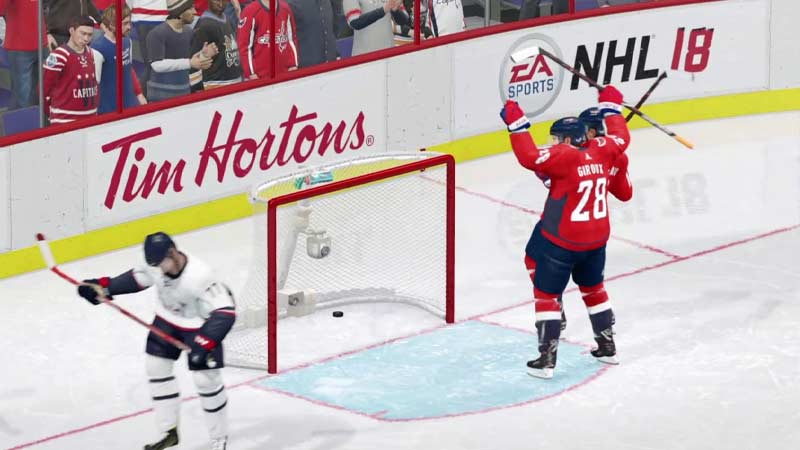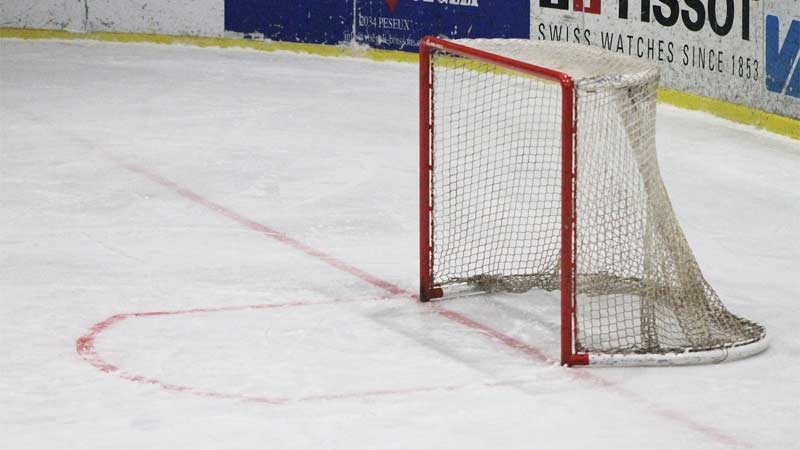In the fast-paced world of hockey, the concept of an empty net goal adds an intriguing twist to the game. When a team decides to pull their goaltender in favor of an extra skater, it can lead to exhilarating moments of risk and reward on the ice.
This strategic move, often employed in crucial moments of a match, can either turn the tide in favor of the trailing team or seal the victory for the leading side.
Empty net goals, while not counted against a goaltender’s statistics like goals against average or save percentage, play a significant role in determining the outcome of a game.
The decision to pull the goalie requires careful consideration of timing and circumstances, as highlighted by experts analyzing optimal moments for this daring maneuver.
Understanding the dynamics of an empty net situation adds an element of suspense and excitement to hockey matches, showcasing the strategic depth of the sport.
Understanding the Empty Net Strategy in Hockey
The Role of the Goalie in Hockey’s Empty Net Scenario
In hockey, the goalie plays a pivotal role in the empty net scenario. When a team decides to pull their goaltender in favor of an extra skater, the goalie transitions from actively defending the net to becoming a spectator on the bench.
This strategic move opens up opportunities for the opposing team to take shots from virtually anywhere on the ice, aiming to secure a game-changing goal.
The absence of the goalie requires the remaining skaters to step up their defensive efforts to prevent the opposing team from capitalizing on the vacant net.
The Tactical Decision: When and Why Teams Pull Their Goalie
The decision to pull the goalie is a critical tactical maneuver that teams make based on various factors. Coaches evaluate the game situation, considering aspects such as the score, time remaining, and the team’s offensive capabilities before opting to remove the goaltender.
Typically, teams pull their goalie when they are trailing in the game and need an extra attacker to bolster their offensive presence.
This strategic move is commonly employed during power plays, where the additional skater can enhance the team’s scoring chances and potentially lead to a game-tying or game-winning goal.
Time management also plays a crucial role in determining when teams decide to pull their goalie, as the limited time left in the game prompts a calculated risk to maximize scoring opportunities.
Risks and Rewards of the Empty Net Tactic

Scoring Opportunities vs. Defensive Vulnerabilities
Pulling the goalie in hockey is a strategic move that involves added offensive power by having an extra skater on the ice but also poses risks like vulnerability to counterattacks due to leaving the net empty.
Factors like score, time left, and team’s offensive abilities influence this decision, which coaches evaluate carefully for potential game-altering outcomes.
While it can result in thrilling comebacks and pivotal goals, it also exposes teams to conceding easy scores from the opponent.
Impact on Team Morale and Momentum
Pulling the goalie and aiming for an empty net goes beyond tactics, affecting team morale and momentum by signaling offensive intent and determination to reverse the scoreline.
This bold move can inspire urgency, belief, and unity among players, fostering a fighting spirit for a common goal. Conversely, failing to capitalize on this opportunity or conceding a goal can lead to frustration, self-doubt, and loss of momentum, potentially benefiting the opposing team.
Ultimately, this decision influences both strategic gameplay dynamics and the psychological resilience and cohesion of the team.
Historical Perspective: Memorable Empty Net Moments

Empty net moments in hockey history have been known to be game-changers, creating dramatic turnarounds. When a team pulls their goalie for an extra attacker, it generates excitement and strategic risks.
A recent standout moment was Ottawa Senators rookie Ridly Greig’s controversial goal against the Toronto Maple Leafs, which led to a heated exchange between players.
Such incidents highlight the balance between celebrating success and avoiding conflicts on the ice, emphasizing the psychological and unwritten rules of player conduct in intense situations.
The Rules of Goalie Pulling in Different Game Situations
Understanding the rules of goalie pulling in hockey is essential for teams looking to enhance their gameplay tactics. Coaches carefully consider factors like the score, time remaining, and offensive strength before deciding to pull the goalie.
While this strategy can increase scoring chances, it also comes with increased defensive vulnerabilities and can influence team morale and momentum in critical game situations.
Delayed Penalty Explained
In a scenario where a delayed penalty is called against the opposing team, the team with the advantage has the option to pull their goalie to add an extra offensive skater to the ice.
This aggressive move aims to capitalize on the delayed penalty situation by leveraging the numerical superiority to increase scoring chances.
However, this tactical decision requires a delicate balance, as the vacant goal poses a significant risk if the penalized team gains possession and scores while the net is unguarded.
Final Minutes Strategy: Regulation and Overtime Dynamics
During the final minutes of regulation play or in overtime situations, the decision to pull the goalie becomes a high-stakes strategic maneuver. Coaches must assess the game’s dynamics, considering factors such as the score margin and the urgency to equalize or secure a winning goal.
Pulling the goalie in these critical moments can either lead to a thrilling comeback or expose the team to defensive vulnerabilities, making it a calculated risk that can shift the game’s momentum dramatically.
Analyzing the Effectiveness of the Empty Net Strategy
Statistical Insights: Success Rates and Scoring Patterns
Analyzing the effectiveness of the empty net strategy in hockey involves considering success rates, scoring patterns, and various factors such as score, time remaining, and team capabilities.
Empty net goals impact game outcomes by enhancing offensive power while exposing teams to defensive vulnerabilities.
Statistical analysis of scoring patterns during this strategy offers insights for optimizing gameplay tactics and making informed decisions about pulling the goaltender to secure a lead strategically.
This analytical approach helps teams leverage numerical advantages while minimizing risks, influencing game results and discussions on player conduct in hockey.
Empty Net Goal: Risk vs. Reward
Analyzing the strategic use of empty net goals in hockey provides insights into the delicate balance between risk and reward when pulling the goaltender to gain an extra skater.
The decision to employ this tactic hinges on various factors, including the score, time remaining in the game, and the offensive capabilities of the team.
While empty net goals enhance offensive power and increase scoring opportunities, they also leave teams vulnerable defensively, potentially impacting morale and momentum on the ice.
Coaches strategically weigh the risks and rewards of utilizing the empty net strategy. By understanding the rules surrounding goalie pulling in different game situations, teams aim to optimize their gameplay tactics.
Statistical data on the success rates and scoring patterns associated with empty net goals offer valuable information for teams looking to capitalize on this tactical maneuver effectively.
Empty net goals play a pivotal role in determining game outcomes, as they empower teams offensively while simultaneously exposing them to defensive risks.
By studying scoring trends during these moments, teams can refine their strategies and make well-informed decisions about when to pull the goaltender.
This nuanced approach not only influences game results but also contributes to ongoing discussions surrounding player conduct and adherence to unwritten rules within the sport.
Frequently Asked Questions
Why do teams pull the goalie in hockey?
In hockey, teams pull the goalie to gain an extra skater advantage and increase their scoring opportunities when trailing by one or two goals at the end of a game.
What factors do coaches consider before pulling the goalie?
Coaches consider factors such as the score, time remaining, offensive capabilities, and game situation to determine whether pulling the goalie to add an extra attacker is the right strategic move.
How do empty net goals impact hockey games?
Empty net goals significantly influence game outcomes by shifting offensive power, creating defensive vulnerabilities, impacting team morale, and influencing momentum on the ice.
What statistics can help teams optimize goalie-pulling tactics?
Statistical insights on success rates and scoring patterns associated with empty net goals provide valuable information for teams to refine their strategies and make well-informed decisions during critical game moments.
Conclusion
Empty net goals in hockey serve as a strategic tool that can shift the dynamics of a game within seconds. Coaches weigh the risks and rewards before opting to pull the goaltender, considering various factors like score differentials and time remaining.
By analyzing statistical trends and success rates associated with empty net goals, teams can refine their gameplay tactics for optimal performance.
These goals not only impact game outcomes but also influence team morale and momentum on the ice.
Understanding the nuances of when to employ this tactic is essential for teams looking to gain an edge in competitive play.
Through a blend of strategic insight and statistical analysis, teams can harness the power of empty net goals to secure victories and shape the narrative of each game.








James Felix